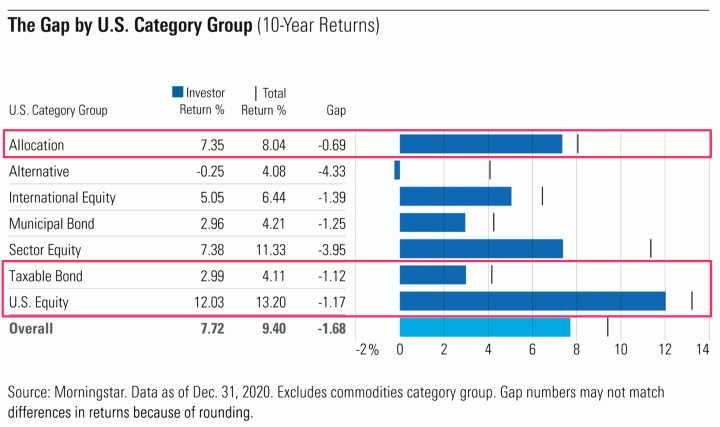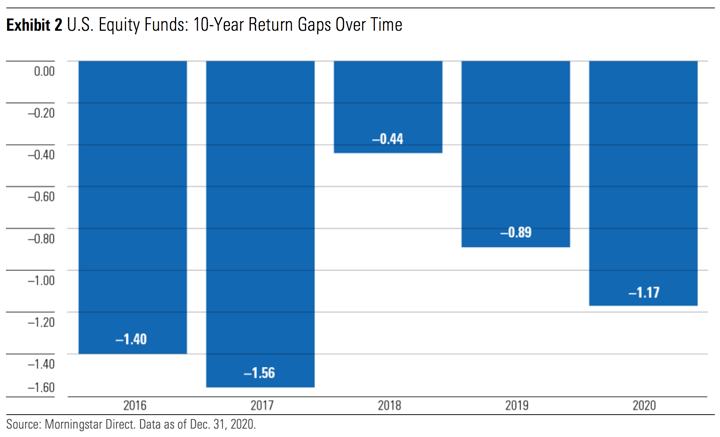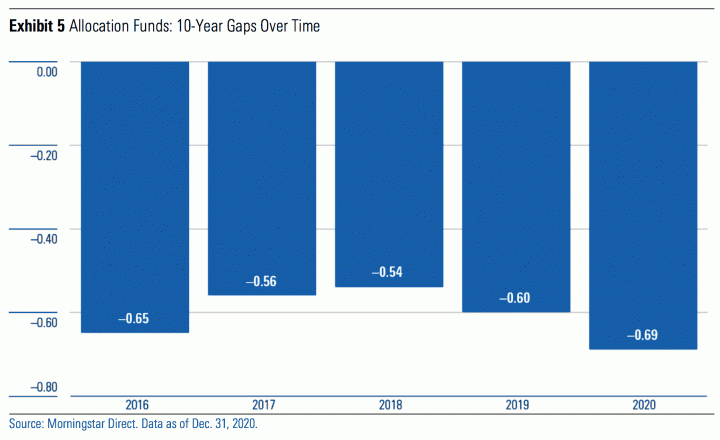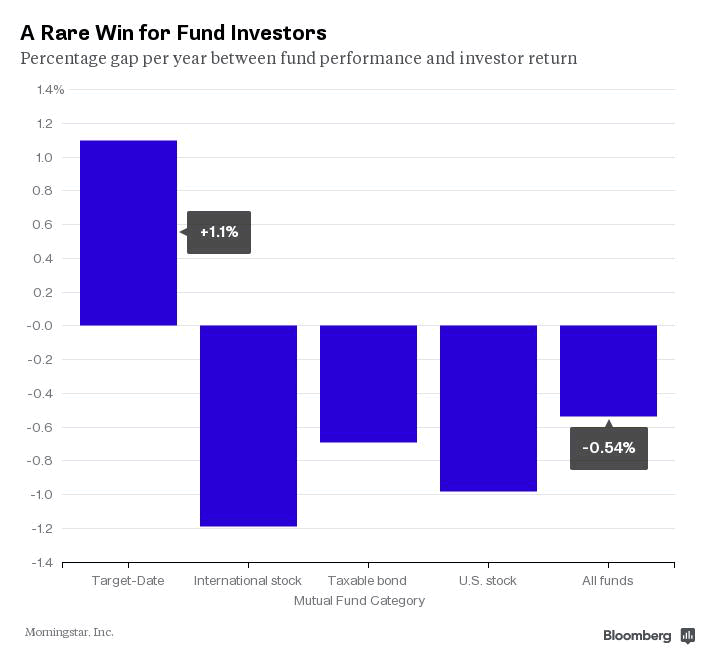How Investor Timing Impacts “Actual-World” Returns — My Cash Weblog
Morningstar has launched the 2021 replace to their annual Thoughts The Hole research, which measures the hole between reported funding returns (purchase and maintain all through the complete interval) and investor returns (precise returns skilled due the real-world timing of purchase and promote transactions). How effectively does the common investor time their buy and promote transactions?
For the 10-year interval from 12/31/2010 to 12/31/2020, the common return hole was adverse 1.7% yearly, with adverse gaps throughout the board:

Traders in US inventory funds had a 10-year return hole of adverse 1.2% yearly. This hole has diversified over previous rolling 10-year durations, however has been constantly barely adverse:

Now, this isn’t utterly attributable to efficiency chasing. Right here’s a fast instance of how regular dollar-cost averaging can also lead to a return hole:
To make use of a easy instance, let’s say an investor places $1,000 right into a fund at the start of every yr. That fund earns a ten% return the primary yr, a ten% return the second yr, after which suffers a ten% loss within the third yr, for a 2.9% annual return over the total three-year interval. However the investor’s dollar-weighted return is adverse 0.4%, as a result of there was much less cash within the fund throughout the first two years of optimistic returns and more cash uncovered to the loss throughout the third yr. On this case, there was a 3.3-percentage-point per yr hole between the investor’s return (adverse 0.4%) and the fund’s (2.9%).
Morningstar ran some further simulations and DCA does probably account for a number of the hole, however a perfectly-steady DCA investor nonetheless outperformed the real-world investor in 6 out of seven fund classes. DCA can’t be helped in case you are merely investing what you’ll be able to, when you’ll be able to, however there may be nonetheless further buying and selling out and in that seems to solely make issues worse.
Essentially the most boring fund class that features Goal-Date funds has the smallest return hole. Goal-date funds are included within the “Allocation” fund class as they embrace a managed mixture of shares, bonds, and different courses. These funds have the calmest buying and selling exercise, and we see that the return hole has been constantly smaller over time:

The fund classes with probably the most risky cashflows out and in have the best return gaps. Different funds and sector fairness funds did the worst.
Investing in a low-cost target-date fund (TDF) is simple to dismiss as “too easy” or for the “inexperienced newbies solely”, however usually the inaction of TDF buyers work of their favor. Possibly we must always give credit score to the common-or-garden buyers that is aware of they may do quite a bit worse by considering they’ve expertise that they don’t even have. (In the meantime, I’m additionally responsible of considering that I can do higher than a TDF.) From a Bloomberg article utilizing Thoughts the Hole information from 2015:
However target-date funds have one huge benefit over different kinds of mutual funds, the information present. The common mutual fund has a flaw, which is that the common investor rarely does in addition to his or her funds. Traders have a tendency to leap out and in of funds on the mistaken time. They purchase excessive, selecting funds solely after they’ve accomplished effectively. And so they promote low, dumping underperforming funds simply as they’re about to take off.



No comments